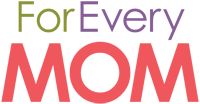I wasn’t always an addict.
My parents weren’t addicts. Their parents weren’t addicts. My aunts, uncles and siblings weren’t addicts and neither were my friends. My path to addiction wasn’t all that uncommon, but the catalyst was.
April 20, 1999. I was seventeen years old and a junior at Columbine High School in Littleton, Colorado. I walked into the library to meet my best friend Corey and others for lunch. I remember hearing what sounded like gunshots, but we immediately brushed it off as construction noise, until a teacher ran into the library screaming for everyone to get under the tables. You can hear her yelling at Corey and I on the 911 call from the library— we were the last two still standing, trying to figure out what to do. Eventually, we did as instructed. We got under a table with two other students and waited. We were all scared and Corey kept telling us it would be okay, that the cops would come.
I wasn’t an addict before Columbine.
Growing up, I spent most of my time fishing and playing golf. I had never ingested alcohol or marijuana, much less anything stronger. Addiction just wasn’t a part of my life. It wasn’t talked about. I wasn’t witness to it. I had no idea what I was about to face.
April 20, 1999. Just ten minutes after the perpetrators entered the library I found myself playing dead next to a pool of blood. I had been shot twice and witnessed my best friend murdered as we were huddled together waiting for help to come. My life was shattered. I was broken. And less than an hour later, I was numb. Medicated on a variety of narcotics intended to relieve pain and sedate.
I was addicted.
Addiction hit me before I realized what was happening. In the weeks after Columbine I was treated by several different doctors — all prescribing medications, but none in collaboration with the others. Within days I was taking pain pills, amphetamines, and various other psychotropic medications. It was only a matter of days before I learned to manage my emotional pain with substances.
I learned very quickly that I could use my traumatic experience and physical injuries to manipulate doctors in my favor. Within months of the shooting, I was in active addiction – an addiction that persisted throughout my late-teens and 20s. When the prescription bottle ran dry, I turned to dealers or the internet. I would do absolutely anything to not have to feel.
I was able to rely on my creative aptitude to piece together what looked like a successful career in marketing management and business development. I worked hard, moved my way up, and even won awards for my work. But in reality, I wasn’t keeping it together. I relied on the false core belief that I “needed” the pills I was taking. That they were making me more creative. More successful. More driven. I knew I needed help. But after each stint in rehab it was only a matter of time before I relapsed. What started as prescription abuse had turned into full blown polysubstance dependence. Alcohol, marijuana, cocaine, ecstasy, it didn’t matter. Whatever it was, there was never enough. “More” was truly my drug of choice.


